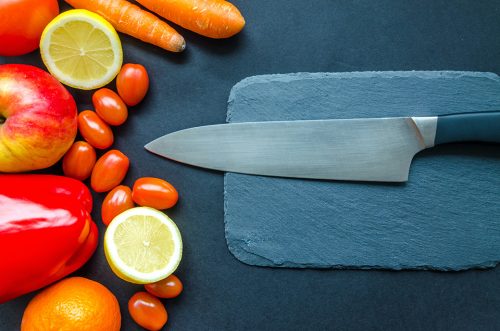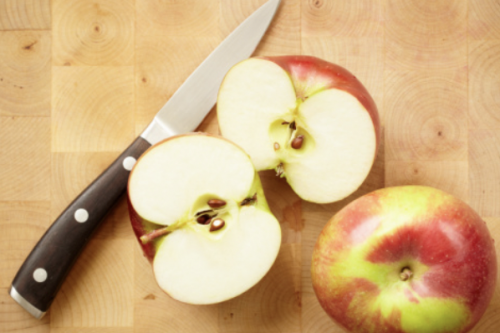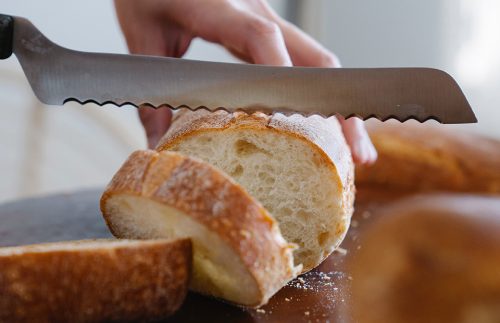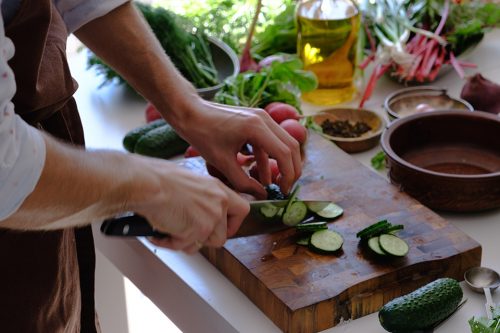If you are just starting out in the kitchen and want to make some delicious food, I would say hold your horses. First and foremost, we must learn how to use cooking appliances. A knife is a necessary tool in the kitchen. It is critical to select the best tool for the job. Learn how to choose the best knife for you, how to use it, and how to care for it. Furthermore, if you are interested in entering this industry, modern restaurant game simulators can provide you with a virtual experience of what it takes to run a successful restaurant.
Selecting the right knife
A good quality knife can go a long way, and selecting a good pair of knives from the many options available can be difficult. Three types of knives are required in every kitchen.

-
A Chef’s Knife
A chef’s knife is used for chopping, mincing, and cutting. This will cover all of your basic food preparation needs. It measures 7.8 to 9 inches long. A good knife can completely transform your attitude toward cooking.

-
A Paring Knife
A Paring Knife is used for peeling, trimming, and cutting small items of food. They are especially useful for cutting fresh fruits. A pairing knife with a serrated blade is ideal for cutting through soft skin, such as tomatoes, or a straight knife for cutting through apples.

-
A Bread Knife
Serrated knives are ideal for slicing bread. A serrated knife is also employed for carving roasted meat joints and other items, making it a useful kitchen tool. The large serrations cut through the crispiest crusts while preserving the soft crumb inside.
-
A Good Weight and Balance
If you use a well-balanced knife, you should be able to cut for an hour without experiencing any wrist or hand discomfort. You’ll also find it much easier to control the knife, making precise cuts a breeze.
A good utility kitchen knife should have a good balance and weight between the blade and the tang, which is the steel that extends into the knife’s handle.
Check by balancing the knife on your finger near the top of the handle. It should feel dense in your hand, allowing you to let the knife do the work.
-
The Best Steel
Choosing a knife with good steel is perhaps the single most important factor. The quality of the blade is critical to the overall quality of the knife. However, understanding what makes good steel is not widely available. A knife’s sharpness, durability, hardness, edge retention, and sharpening difficulty should all be considered.
Stainless steel is by far the most commonly used metal for chef’s knife blades. A Santoku knife is a Japanese-style knife and Damascus is a German steel knife is one of the best options that you can try for your kitchen.

How to use a knife
Ingredients that are cut uniformly cook at the same rate, resulting in a dish that is evenly cooked. Because each piece of food is cut in the same way, the finished dish will look beautiful.
The index finger is completely wrapped around the blade. The index and thumb fingers should be opposite each other on either side of the blade, with the remaining three fingers curled around the handle.
You should hold the knife primarily with your thumb and forefinger. If you find yourself tightly clutching the knife’s entire handle, simply relax and loosen your grip. You’ll get used to this grip with practice.
Guiding the food
Now that your knife hand understands what to do, you must ensure that your other hand does as well. Your “guiding hand” is your non-knife hand, and its job is to keep the food from sliding around on the cutting board. This places that hand in a dangerous situation. With the knife blade rapidly moving up and down, you must keep your fingertips tucked safely away while still holding the food firmly.
Using the “claw grip” keeps the fingers safe by curling them inward and gripping the food with the fingernails.
Maintenance
It is critical to care for them so that they last and that injuries are minimized.
-
Cleaning Knives:
Use soap and warm water to clean your knives. Do not put them in the dishwasher. Use your hands to wash them. After washing, immediately wipe them dry.
-
Honing:
The knife’s edge is sharp and thin, with a tendency to fold over time. Honing aids in the alignment of the knife’s edge. It simply straightens and uncurls the edge. Within a few strokes, honing steel will realign the knife’s edge.
-
Cutting Boards:
The surface on which you choose to use your knife is a major factor in its longevity. When cutting fruits and vegetables, always use a wooden cutting board. A cutting board can be made from either wood or bamboo.
-
Sharpen your knife
A dangerous knife is a blunt knife. More pressure is required when using a blunt knife, which increases the likelihood of it slipping and cutting you. A knife should be sharpened once a year using a wheat stone.
You can always have your knives sharpened by a professional.
-
Storage
Storing an exposed knife blade in a drawer full of other kitchen utensils is bad for both the blade and you, as you risk cutting yourself while rummaging through the drawer.
With a magnetic strip mounted on the wall, knives simply adhere to the strip and do not move or get knocked around.
Wooden knife blocks are another option, but make sure to slide the knives into the slots upside down so they don’t rest on the blades’ sharp edges.
Conclusion:
The only way to perfect the art of your knife skill is to practise. Upgrading your knife skills will help you cook some amazing and healthy cuisines for your loved ones and keep you safe. Want to know more about the cooking entertainment industry, visit kitchen nightmares restaurants still open
Interesting Related Article: “How to Pick the Best Appliances to Match Your Kitchen Design“

